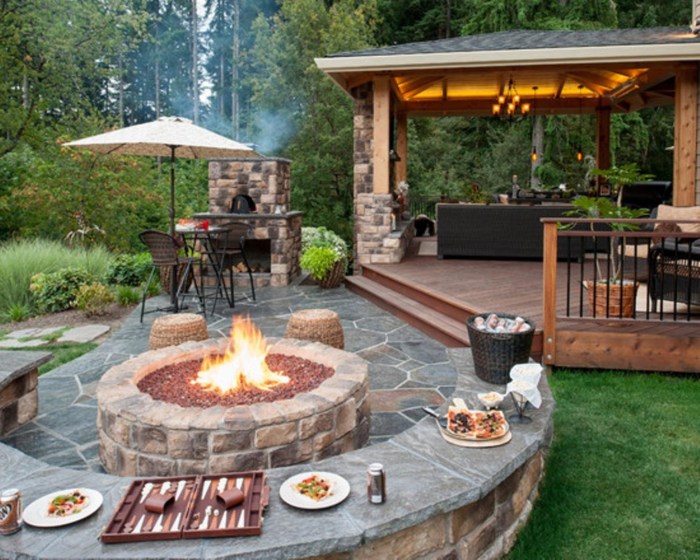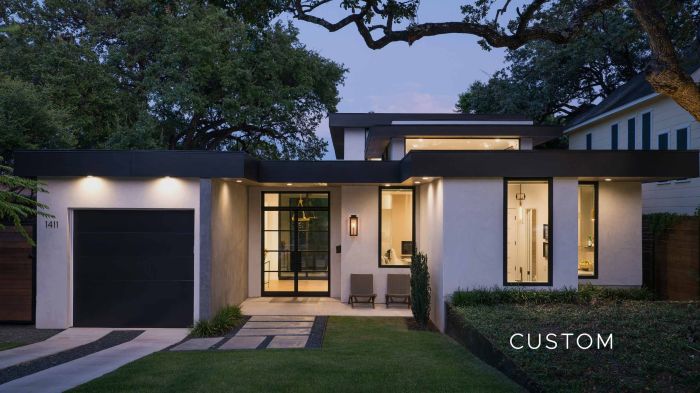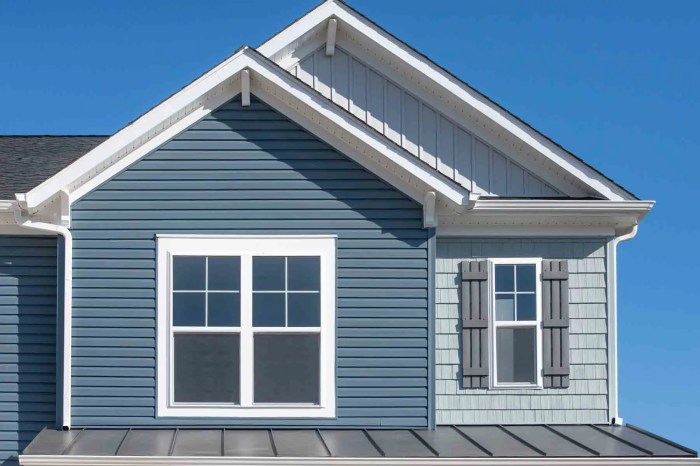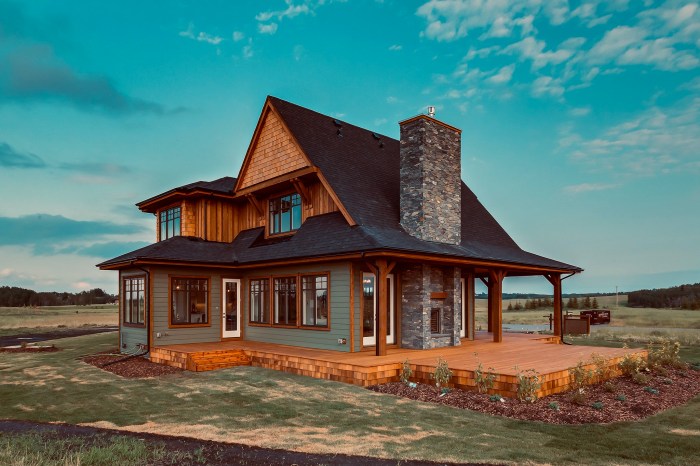Captivating Designs: Modern Flat Roof House Designs by Award Winning Architects
Embark on a journey through the world of modern flat roof house designs crafted by award-winning architects, where innovation meets aesthetics in a harmonious blend. Discover the allure and creative genius behind these architectural marvels that redefine contemporary living spaces.
Delve deeper into the intricate fusion of design elements and sustainability practices that shape these unique structures, setting them apart in the realm of architectural excellence.
Overview of Modern Flat Roof House Designs
Modern flat roof house designs are characterized by their clean lines, minimalistic approach, and emphasis on simplicity. These designs often feature large windows, open floor plans, and a connection to the outdoors.In recent years, modern flat roof house designs have gained popularity in the architecture industry due to their contemporary look and functionality.
These designs offer a sleek and stylish aesthetic that appeals to homeowners looking for a more modern and minimalist home.Award-winning architects have played a significant role in innovating modern flat roof house designs by pushing the boundaries of traditional architecture.
They have introduced new materials, technologies, and design concepts to create unique and striking homes that stand out in the industry.
Key Elements in Modern Flat Roof House Designs
Modern flat roof house designs are characterized by several key elements that set them apart from traditional architectural styles. These elements contribute to the sleek and minimalist aesthetic that is often associated with modern design.
Essential Elements in Modern Flat Roof House Designs
- Flat Roof: The most obvious element, flat roofs give modern homes a clean and contemporary look.
- Large Windows: Expansive windows are commonly used to bring in natural light and blur the lines between indoor and outdoor spaces.
- Open Floor Plans: Modern flat roof houses often feature open floor plans that create a sense of spaciousness and flow between rooms.
- Minimalist Design: Clean lines, simple shapes, and a lack of ornate detailing contribute to the minimalist aesthetic of modern flat roof houses.
Sustainable Features in Modern Flat Roof House Designs
Architects incorporate sustainable features into modern flat roof house designs to reduce environmental impact and increase energy efficiency. These features may include:
- Solar Panels: Utilizing solar panels to harness renewable energy and reduce reliance on traditional power sources.
- Green Roofs: Installing green roofs with vegetation to improve insulation, absorb rainwater, and reduce heat absorption.
- Passive Design: Incorporating passive design strategies like natural ventilation and shading to minimize the need for artificial heating and cooling.
Use of Materials in Modern Flat Roof House Designs
Materials such as glass, steel, and concrete are commonly used in modern flat roof house designs to create a contemporary and industrial aesthetic. These materials offer durability, versatility, and a sleek finish that complements the overall design.
Innovative Design Techniques
In modern flat roof house designs, award-winning architects often employ innovative design techniques to create unique and functional spaces. These techniques not only enhance the aesthetic appeal of the house but also prioritize functionality and sustainability.
Balancing Aesthetics and Functionality
One of the key innovative design techniques used by architects is finding a balance between aesthetics and functionality in modern flat roof house designs. For example, architects may incorporate sustainable materials and energy-efficient features while also focusing on creating visually striking spaces.
By carefully selecting materials, colors, and textures, architects can ensure that the house is not only beautiful but also practical and sustainable.
Importance of Natural Light and Open Spaces
Natural light and open spaces play a crucial role in modern flat roof house designs. Architects often use large windows, skylights, and glass walls to maximize natural light in the house. This not only reduces the need for artificial lighting but also creates a sense of openness and connection to the outdoors
By strategically placing windows and creating open floor plans, architects can enhance the overall ambiance of the house and improve the quality of life for its occupants.
Impact of Location and Environment
When designing modern flat roof houses, architects carefully consider the location and environment to ensure the structure harmonizes with its surroundings while maximizing sustainability and efficiency. The geographical location plays a crucial role in determining the design elements that need to be incorporated to adapt to the climate, topography, and natural surroundings.
Challenges and Benefits of Sustainable Practices
Incorporating sustainable practices in modern flat roof house designs presents both challenges and benefits depending on the geographical location. For instance, in colder climates, architects may need to focus on maximizing insulation and using energy-efficient heating systems to reduce energy consumption.
On the other hand, in warmer regions, passive cooling techniques such as natural ventilation and shading devices can help reduce the need for air conditioning.
- Challenges:
- Adapting to extreme weather conditions
- Choosing appropriate materials for durability and energy efficiency
- Balancing aesthetics with sustainability
- Benefits:
- Reduced energy consumption and lower utility bills
- Minimal environmental impact and carbon footprint
- Enhanced indoor comfort and well-being
Relationship between Indoor and Outdoor Spaces
Modern flat roof house designs often blur the boundaries between indoor and outdoor spaces to create a seamless connection with nature and maximize natural light and ventilation. Architects incorporate features like large windows, sliding glass doors, and outdoor living areas to promote interaction with the surrounding environment.
By integrating indoor and outdoor spaces, modern flat roof houses can enhance the overall living experience and create a sense of openness and continuity.
Final Summary
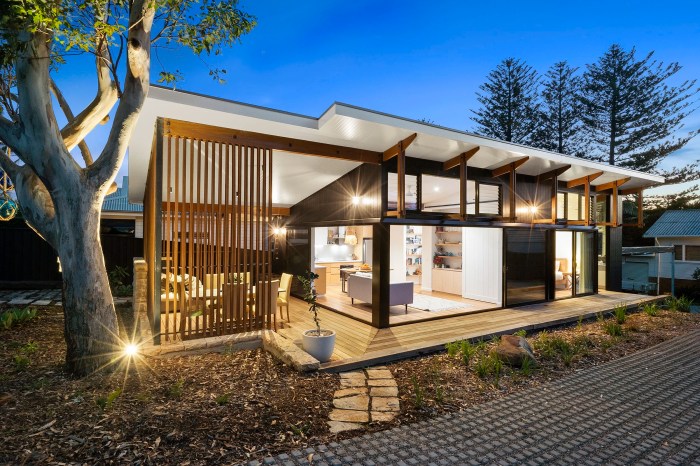
In conclusion, the captivating allure of modern flat roof house designs by award-winning architects lies in their seamless integration of creativity, functionality, and sustainability. These architectural masterpieces stand as testaments to the innovative spirit driving the evolution of residential living spaces.
Expert Answers
How do architects incorporate sustainable features into modern flat roof house designs?
Architects integrate sustainability by utilizing eco-friendly materials, energy-efficient systems, and passive design strategies to minimize environmental impact.
What are some key elements that define modern flat roof house designs?
Modern flat roof house designs often feature clean lines, minimalistic aesthetics, large windows for natural light, and open floor plans for a spacious feel.
How do award-winning architects achieve a balance between aesthetics and functionality in these designs?
By carefully considering both form and function, architects blend innovative design elements with practical living requirements to create spaces that are visually stunning yet highly usable.
Why is the use of materials such as glass, steel, and concrete prominent in modern flat roof house designs?
These materials offer durability, versatility, and a contemporary aesthetic appeal that aligns perfectly with the sleek and modern design language of flat roof houses.
